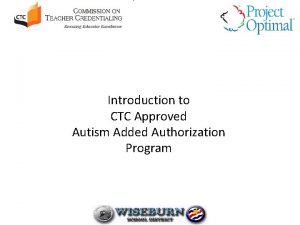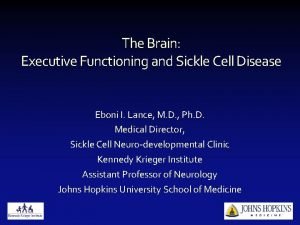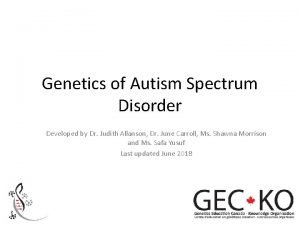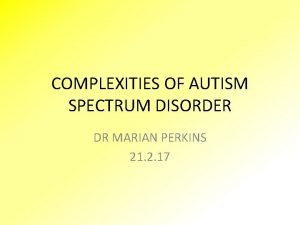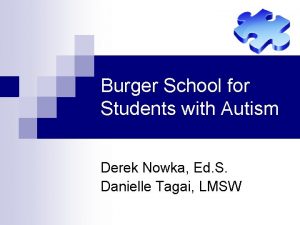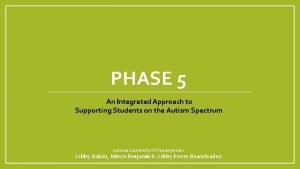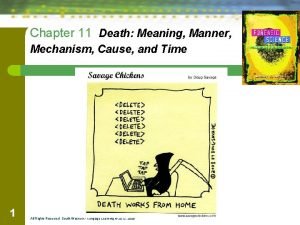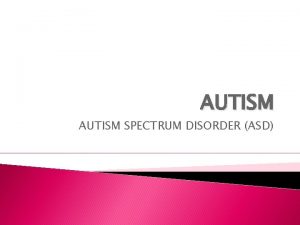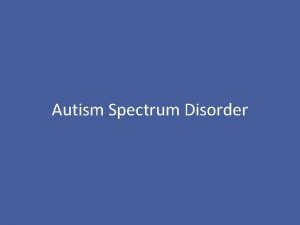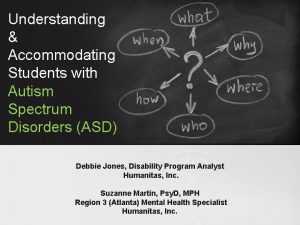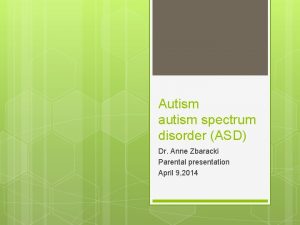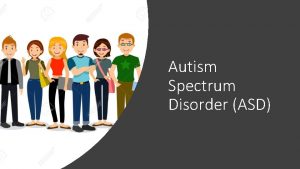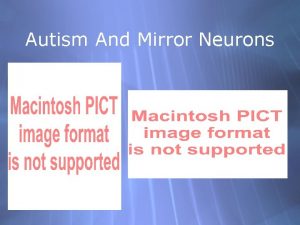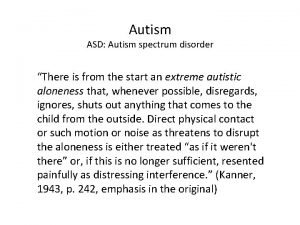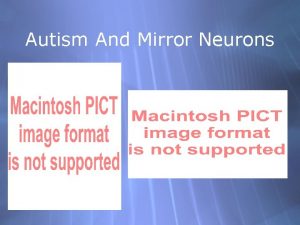Autism Spectrum Disorder Accommodating Students with ASD on










- Slides: 10

Autism Spectrum Disorder: Accommodating Students with ASD on Campus Sarah Parsons, Hannah Davidson, & Lindsay Page

HEADLINE SAMPLE WOULD BE IN THIS POSITION What do you know? • What do you already know about Autism Spectrum Disorder?

HEADLINE SAMPLE WOULD BE IN THIS POSITION PSU’s Population • Currently, Campus Accessibility Services accommodates 444 students. • Of those students, 17 students (or 4%) have a diagnosis of ASD. • For every student that identifies with our office, there are 2 more students on campus with ASD that have not disclosed their diagnosis with our office. • According to Shattuck Pediatrics (2012), about 35% of people with ASD go to college after high school, and that number is increasing.

HEADLINE SAMPLE WOULD BE IN THIS POSITION Living on the Spectrum: Wendy Lampen

HEADLINE SAMPLE WOULD BE IN THIS POSITION Strengths • Exceptional visual skills • Memories • Flashbulb Memory • Think in pictures and in motion • Strong spatial capacity • Exceptional capacity to notice patterns • Exceptional capacity to notice small deviations in patterns or sequences • Exceptional capacity to focus on a single problem for extended periods of time • Exceptional overall intelligence

HEADLINE SAMPLE WOULD BE IN THIS POSITION Difficulties • Language-based thinking is difficult • Language-based organization is difficult • Writing is difficult • Social Communication • Difficulty understanding implied meaning in communication • Difficulty “reading” people or situations • Difficulty distinguishing between people -- Theory of Mind • Difficulty demonstrating insight about themselves

HEADLINE SAMPLE WOULD BE IN THIS POSITION Difficulties • Cognitive Inflexibility • Executive Functioning Disability • Difficulty staying focused in a shifting environment • Processing sensory information appropriately • Understanding the concept of time

HEADLINE SAMPLE WOULD BE IN THIS POSITION Teaching Strategies • Don’t talk for long periods of time, and then ask a person living with ASD to reply in a single word or sentence • Ask short questions with unambiguous answers to assess understanding • Link pictures with words. Provide meaningful pictures to accompany words and concepts that students need to remember • Provide samples of specific organizational expectations • Use visual prompts for time/date information

HEADLINE SAMPLE WOULD BE IN THIS POSITION Personal Strategies • Allow students not to look at you when you are speaking to them or they are speaking to you • Be as clear as you can be about the schedule for your class including assignments, time within the classroom, tests or quizzes • Give students as much warning as possible of changes to the routine • Consider your personal communication style • Communicate directly about things that are important

HEADLINE SAMPLE WOULD BE IN THIS POSITION Questions?
 Autism authorization programs in california
Autism authorization programs in california Autism spectrum disorder adhd
Autism spectrum disorder adhd Asd levels
Asd levels Rare types of autism
Rare types of autism Autism spectrum disorder
Autism spectrum disorder Social pragmatic communication disorder vs autism
Social pragmatic communication disorder vs autism Puberty and autism spectrum disorders
Puberty and autism spectrum disorders Somatization disorder dsm 5
Somatization disorder dsm 5 Burger school for students with autism
Burger school for students with autism Spectrum disorder
Spectrum disorder Fetal alcohol spectrum disorder
Fetal alcohol spectrum disorder
